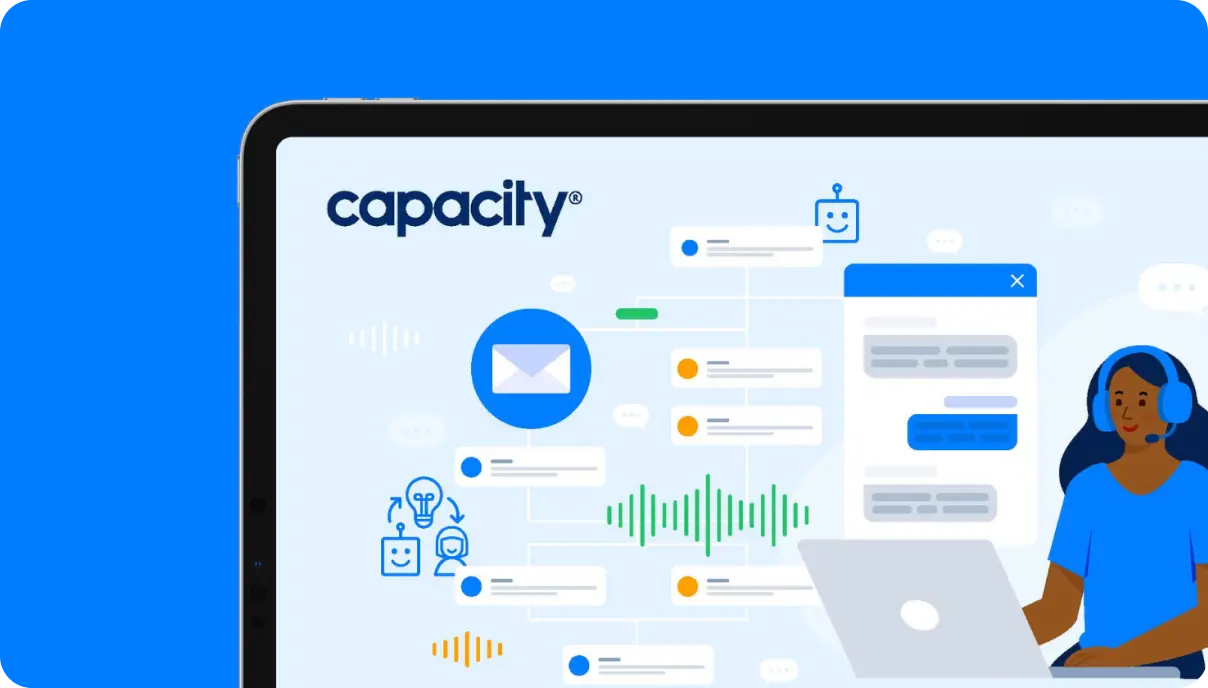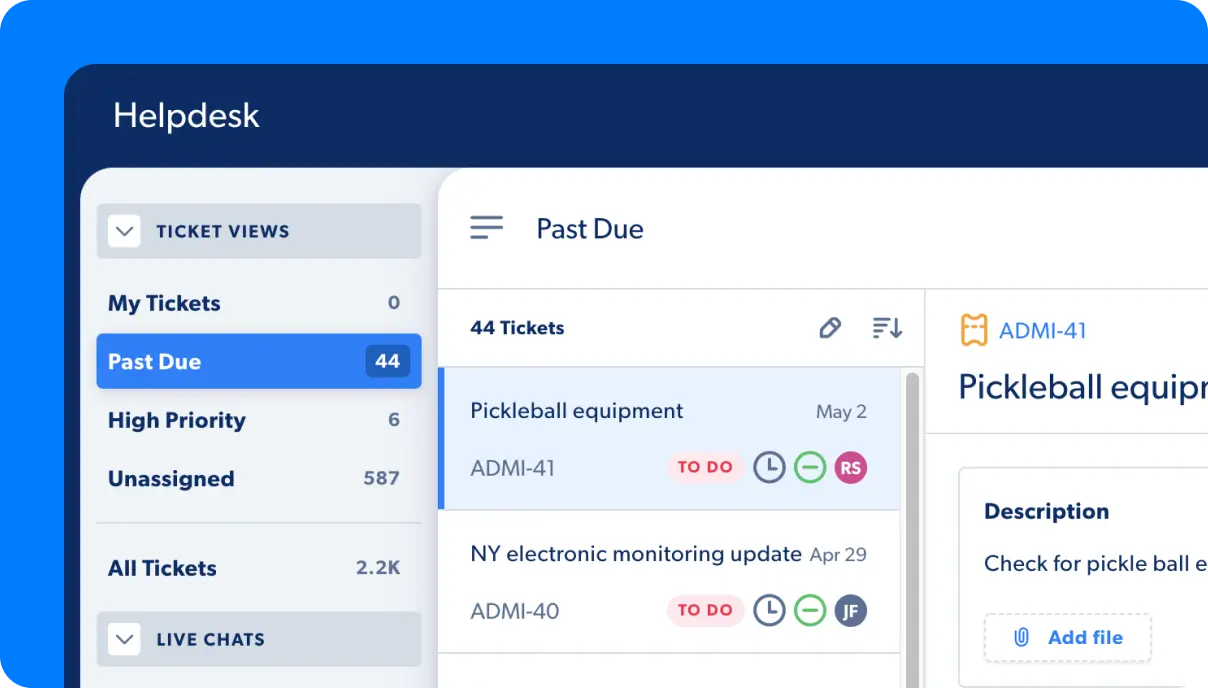Engineering is making the magic happen, your sales reps are ringing that bell, and your customer support team is triaging like George Clooney circa ‘96.
For these kinds of agile teams (and all those we couldn’t fit in that sentence), being equipped with intuitive helpdesk tools could mean the difference between another quarter or closing up shop. Artificial intelligence (AI) and machine learning (ML) are creating better experiences than ever before, for clients and co-workers alike.
But the minute your exec team greenlights a few 21st-century solutions, every helpdesk software vendor in the country is calling, emailing, and messaging you on LinkedIn, each one seemingly slicker than the last. How are you, a non-AI who doesn’t work 24/7, supposed to cut through the noise?
With so many options, who’s to say which helpdesk features will have a meaningful ROI, and which of them won’t?
To help you double-down on five-star reviews, we’ve cherry-picked a few of our favorite helpdesk system tools. While there’s no replacing your team, optimizing their workflow will decrease customer wait times and make your team even more awesome (if that’s even possible).
Without further adieu, here are our three must-have helpdesk tools:
1. Communication is key to a successful, well, anything.
Using a mix of programs like Slack and Google Hangouts, on top of legacy means like SMS and email, most businesses depend on more than one communication channel. With so many different applications for messaging, e-commerce, CRM, and human resources, it’s nearly unavoidable.
While a Swiss-army knife system like this might sound effective, there are drawbacks. Delayed service tickets, bloated calendars, and endless notifications are all too common, and so are the headaches they cause.
For that reason (among others), more teams are adopting omnichannel communication tools. Instead of pinging everyone on Slack, texting your out-of-office co-workers, and sending an email blast for good measure, omnichannel software delivers your org’s mission-critical knowledge to your employees’ preferred channels—from one central hub.
Picture this: Your engineering manager just called to say the upcoming product launch is going to be delayed for three weeks. Something about an electrical short, who knows. The point is, your accounting, marketing, sales, and customer support teams have to shift priorities, and fast.
With omnichannel communication in place, you broadcast a single message that instantly reaches every teammate, via their favored medium. Armed with the knowledge to adjust workflows and reply to customers, a KPI-devastating work stoppage is lessened to a minor bump in the road.
2. Deploy a digital master.
While the idea of a chatbot is nothing new, artificial intelligence is ushering in a new era of guided conversations and streamlined engagement. As a helpdesk tool, few offerings have as much potential to optimize workflows and customers’ experiences as robot-augmented conversation software.
Just a few activities a chatbot can automate:
- Service tickets
- Inbound leads
- Internal/external FAQs
- Best practices documents
- Human resources inquiries
- Tacit knowledge retrieval
Picture this: The aforementioned gadget gets released, finally. Backorders are shipping, Google Shopping Ads are being deployed, and revenue is rolling in. However, as with any new product or service, your customers (and teammates) have questions.
Lots of questions.
In the past, the 90 days post-launch was a barrage of emails, calls, and chats. This time, things are different. Instead of backlogged tickets and an overworked customer support team, everything from simple FAQs to complex troubleshooting is being expedited with intelligent chat software. Customers and co-workers alike receive instant answers, and conversations requiring an SME are seamlessly transitioned.
3. People talk, successful businesses listen.
If you’re relying on Google and Glassdoor reviews to tap into your the minds of your customers and team members, you’re missing out. Big time. Deploying surveys to collect internal and external feedback empowers businesses with actionable data. This knowledge can then be analyzed to guide product roadmaps, customer service best practices, and more.
And delighting your customers is just the beginning. A recent Gallup study revealed that nearly 70% of U.S employees feel disengaged at work, and over 50% are actively looking for a new gig. Point being, tuning into your corporate culture helps minimize turnover, and makes recruiting new talent a walk in the park.
Emerging tech has made surveying easier than ever. The same omnichannel communication tools mentioned above can be used to request feedback through any medium. No matter how and where your respondents prefer to communicate, you reach them.
Picture this: You’re now 6 months post-launch. Your team exceeded the annual sales goal of this latest gadget by 23%, and the engineering team is planning version 2.0. In a meeting with the engineering manager, she asks for your recommendations. What features should be added, removed, or updated?
Instead of “going with your gut” like you did last year, you supply her with actual data! Customers and teammates have answered a series of surveys, and outlined in detail what they’d like to see changed. Equipped with this knowledge, she’s able to efficiently and confidently design a product roadmap, and set KPIs.
Helpdesks are about conversations.
Ultimately, all helpdesk tools have the same end goal: deliver helpful, relevant information to those who need it, when they need it. From automating answers to customers’ FAQs, to gaining insight into the health of your corporate culture—these software solutions exist to improve communication.








































